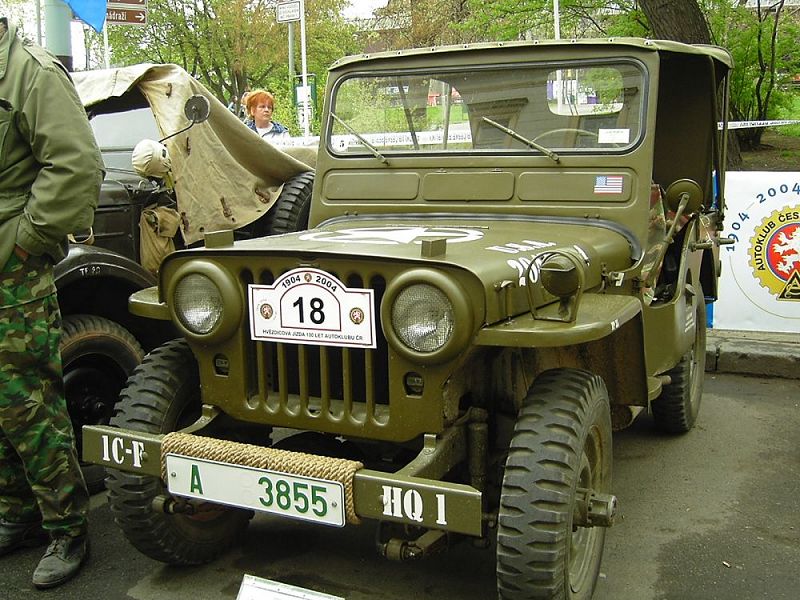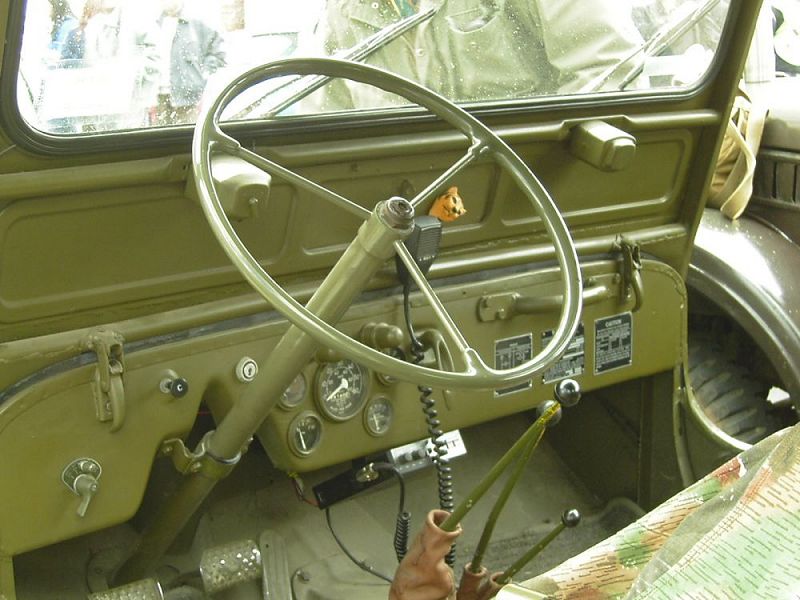Description
The Jeep Willys M38 was the true military successor to the legendary World War II-era Willys MB, designed to meet the new demands of the postwar battlefield and the emerging Cold War. Produced from 1950 to 1952, the M38 — officially designated the Willys Model MC — represented a refined, strengthened, and more capable version of the wartime Jeep, adapted for greater durability, reliability, and ease of maintenance under military conditions. It carried forward the same spirit of simplicity and toughness that had made the original Jeep a global icon, while incorporating subtle but important engineering improvements born from years of wartime experience.
At first glance, the M38 closely resembled its wartime predecessor. It retained the classic Jeep shape: a flat front grille, upright fenders, folding windshield, and slab-sided body with open seating for two and a cargo area at the rear. But beneath this familiar form was a machine built to withstand harsher environments and heavier use. The M38 featured a more robust frame, fully waterproofed electrical systems, and enhanced off-road capability — all essential for the new generation of military service it would undertake in the Korean War and beyond.
The M38’s body was made entirely of steel and mounted on a heavier-duty frame than that of the civilian CJ-3A from which it was derived. The frame was fully boxed, giving it greater torsional rigidity and resistance to flex, an important improvement for carrying additional equipment and enduring rough terrain. The axles were stronger, and the springs were heavier to handle military payloads. The front grille was revised from the wartime slat-bar design to a solid stamped-steel panel with seven vertical slots, simplifying production and increasing strength. The headlights were recessed into the grille for better protection, while the blackout lighting system and military-grade 24-volt electrics distinguished it immediately from civilian models.
Powering the M38 was the familiar Willys “Go-Devil” engine, a 2,199 cc (134 cu in) inline-four that produced 60 horsepower and 142 Nm of torque. Though not new, it was a proven unit that had earned its reputation in both combat and civilian service. For military use, it was modified with a waterproof ignition system, sealed wiring, and a deep-water fording kit that allowed the vehicle to wade through water up to 1.5 meters deep. A 24-volt electrical system, instead of the civilian 6-volt setup, allowed the use of more powerful radios and auxiliary equipment. The engine was paired with a three-speed T-90A1 manual gearbox and a two-speed Spicer 18 transfer case, providing selectable four-wheel drive with high and low ranges.
The M38’s off-road ability was formidable. With a short 80-inch wheelbase, light weight (around 1,200 kilograms), and excellent ground clearance, it could climb steep grades, traverse rocky or muddy ground, and maneuver through tight spaces with ease. The suspension — live axles front and rear on semi-elliptic leaf springs — gave it the articulation necessary for rugged terrain, while its approach and departure angles were excellent for negotiating obstacles.
The design also prioritized serviceability. Military mechanics in the field could quickly access mechanical components, and many parts were interchangeable with both the earlier MB and civilian CJ series. The windshield folded flat, the doors and top were removable, and the rear carried mounting points for tools, a spare wheel, and a jerry can — practical details inherited directly from the wartime Jeep.
Inside, the M38 remained functional and austere. The interior was designed for durability, not comfort. Two separate front seats and a simple metal dashboard housed basic instruments: speedometer, ammeter, fuel, oil pressure, and temperature gauges. A rotary main switch controlled the ignition and electrical circuits, designed to operate in all weather conditions. Floors were ribbed steel, easy to wash down, and the entire cabin could be fitted with a canvas top for protection from the elements.
The M38 was built to be as adaptable as it was reliable. It could be equipped with radios, light armament, or tools, and it served in a variety of roles — reconnaissance, transport, ambulance, and utility. It was capable of towing small artillery pieces or trailers, and its compact size allowed it to be transported by aircraft or dropped by parachute. The waterproofing and fording system made it particularly effective in amphibious or wet conditions, expanding its range of operational environments.
The M38 saw extensive use during the Korean War, where it proved its worth as a dependable light utility vehicle in rugged terrain and harsh climates. It was favored by both American and allied forces, and its simplicity of operation made it easy to train soldiers on and maintain in the field. Many M38s also served in military aid programs, finding their way to armies across Europe, Asia, and Latin America during the 1950s.
Production continued until 1952, with approximately 60,000 units built. It was followed by the M38A1, which introduced a longer wheelbase, rounded fenders, and a more powerful F-head engine — but the M38 remained the last Jeep to carry the pure flat-fendered look of the wartime original.
On the road, the M38 was basic but capable. Its top speed was around 60 mph (95 km/h), though it was happiest at lower speeds, where its torque and traction could shine. Its unassisted steering and manual brakes required a firm hand, but its mechanical honesty and feedback made it predictable and easy to control once mastered. Off-road, it remained unmatched for its size, able to tackle mud, rocks, snow, and sand with confidence.
Today, the Jeep Willys M38 is revered among collectors and military vehicle enthusiasts as one of the most authentic representations of the original Jeep ethos — simple, reliable, and indestructible. Restored examples are often used in parades, military reenactments, and classic off-road events, valued as much for their historical significance as their enduring practicality.
The M38 occupies a special place in Jeep history. It was the last of the “pure” military flat-fender Jeeps, a design that traced its lineage directly back to the Willys MB. It embodied everything that made the Jeep legendary — ruggedness, adaptability, and ingenuity. More than just a vehicle, it was a symbol of freedom and resilience, serving in the first years of the Cold War just as its forebear had served in the fight for peace.

